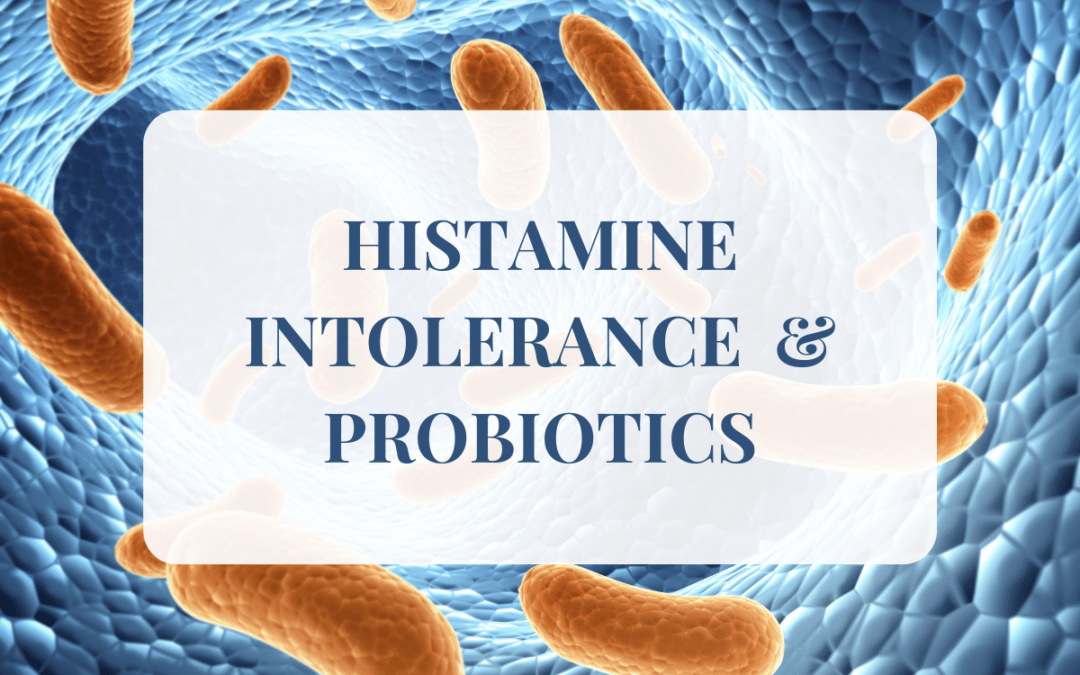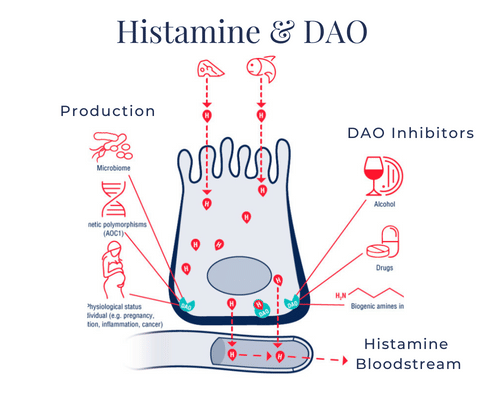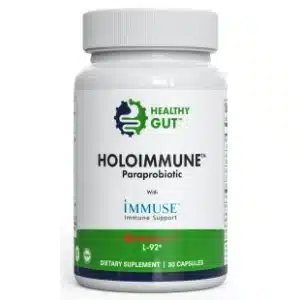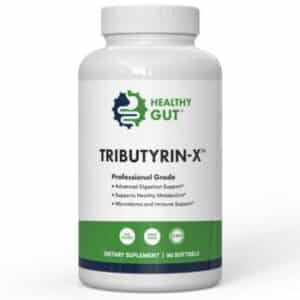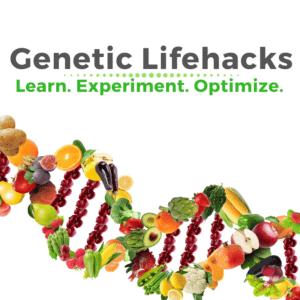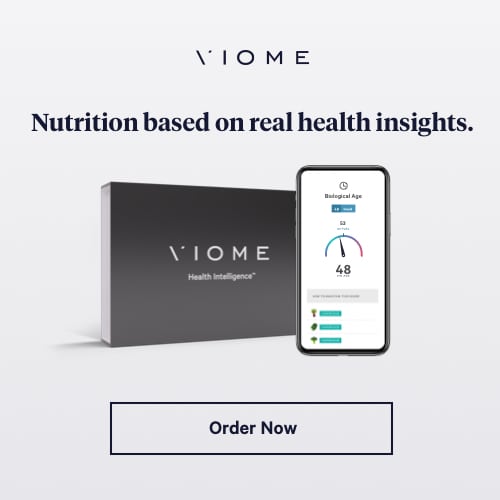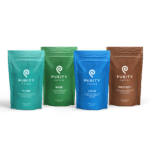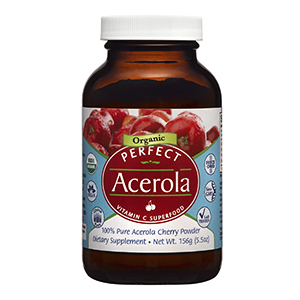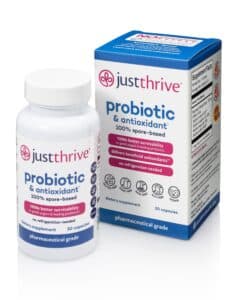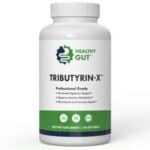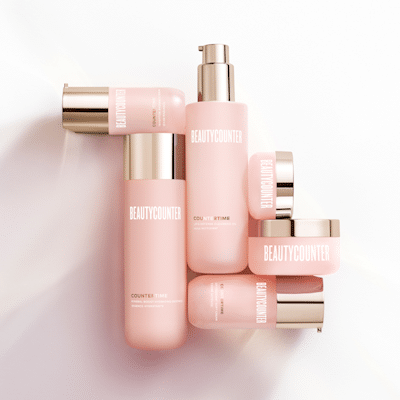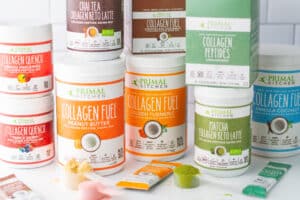Can Probiotics Help with Histamine Intolerance or Make it Worse?
If you have been struggling with histamine intolerance; you have probably been looking for supplements that would help relieve the symptoms, like IBS, gas, and bloat. And most likely, you have tried some probiotics to help heal the gut and reduce histamine levels.
After all, histamine intolerance is primarily due to a lack of diamine oxidase (DAO), produced predominately in the gastrointestinal lining where our gut microbiota resides. So, it would make sense that probiotics that help to balance the gut microbiota and heal the gut would help to resolve your histamine intolerance.
Research on probiotics and histamine intolerance is evolving at this point. However, research shows that an imbalanced gut microbiota or dysbiosis plays a significant role in food intolerances, including gluten, histamine, tyramine, and glutamate.
Probiotics and prebiotics (food for the commensal bacteria) are essential in overcoming histamine intolerance as they can help rebalance the gut microbiota.
But what are the right probiotics is the question? Could some probiotics make your histamine intolerance worse?
Histamine Intolerance & Our Gut Microbiota
Every time we sit down to eat a meal, we expose our gut to toxins and endotoxins (toxins that the body produces during digestion).
When we think of toxic substances, food does not come to mind. But eating and the process of digestion is the most common exposure to toxic substances that we as humans experience.
Our microbiome helps protect us from these toxins, digest our food, deliver nutrients, and promote healthy metabolism of nutrients like vitamin B12. And helps to degrade and block histamine from foods during the digestion process.
More than 100 trillion commensal bacteria in our gastrointestinal tract or the gut lining play an essential role in our immune system and our digestion. The diversity and abundance of our gut microbes determine whether or not food is digested safely and efficiently, providing the best protection against endotoxicity.
When our gut microbiota becomes imbalanced, lacks diversity, or we have reduced bacteria due to antibiotics, toxins can pass through the body. When our gut microbiota becomes imbalanced, this can lead to a condition known as intestinal permeability or leaky gut.
Leaky gut leads to inflammation, the release of histamine, and a reduction in the DAO enzyme increasing histamine levels.
DAO functions in enterocytes or the cells of the intestinal lining. Here DAO degrades histamine from our food but there many different factors that can impact the production of DAO including an imbalanced microbiome. Courtesy of Histamine Intolerance – The More we know the Less We Know
How Does Gut Dysbiosis or Microbiome Imbalances Cause Histamine Intolerance?
A diverse and balanced microbiome is similar to a vegetable garden with few weeds. Weeds are an evitable part of any garden, but there are fewer vegetables if they overgrow and take over our garden.
The same goes with gut microbiota – some bacterial or yeast (Candida) strains can easily take over our microbiome. Candida and other molds are known histamine producers and often can be a “hidden infection” that we are unaware of.
Other bacterial infections that increase or produce histamine are:
- Candida – Yeast Overgrowth
- Citrobacter
- C. perfringens
- E. coli
- H. pylori
- Staphylococcus
In most cases the bacteria are gram-negative bacteria that release a substance known as Lipopolysaccharides (LPS). High levels of LPS can cause a strong immune response, inflammation, and histamine release.
In addition to a robust immune response, a compound known as Zonulin will be released that loosens up the tight junctions in our intestinal lining, leading to leaky gut and histamine release.
Top that off, dysbiosis and leaky gut cause a reduction of DAO – the very enzyme you need to degrade histamine. There are many causes for low DAO with gut dysbiosis the number one cause.
Are There Probiotic Strains That You Should Avoid?
Yes, definitely. I learned the hard way on this one. Trying to experiment with making my own yogurt, I purchased a culture to make my yogurt containing Lactobacillus bulgaricus. Oops…
Lactobacillus bulgaricus is a common probiotic used in many popular yogurt brands, i.e., Fage. Always read the labels on yogurt and other fermented products to see what strains they are using. Avoid products that do not correctly list probiotic strains used in their products.
Probiotic strains that are commonly found in probiotic supplements that are histamine producers:
- Lactobacillus bulgaricus
- Lactobacillus casei
- Lactobacillus reuteri
- Lactobacillus brevis
- Lactococcus lactis
- S. thermophilus
Some of these strains can also produce other biogenic amines making your histamine intolerance worse. While you are beginning your healing process of resolving histamine intolerance, it is best to avoid these probiotic strains.
What Are the Best Probiotics for Histamine Intolerance?
Just like there are probiotic strains that promote histamine, there are strains that degrade histamine. Along with DAO which blocks absorption, these strains degrade and breakdown histamine. These are also commonly found in fermented foods and dietary supplements.
- Bifidobacterium infantis
- Bifidobacterium longum
- Lactobacillus gasseri
- Lactobacillus paracasei
- Lactobacillus rhamnosus
- Lactobacillus plantarum
- Lactobacillus salivarius
Using probiotic supplementation is a great way to improve your gut microbiota and resolve histamine intolerance. But don’t forget to add healthy foods that contain prebiotics to truly heal leaky gut and dysbiosis.
Some of the foods that are high in healthy prebiotics, like apples, onions, garlic, leeks, asparagus, and even barley, are all high in prebiotics.
Root vegetables like beets and sweet potatoes provide the gut bacteria with the food that the good bacteria need to flourish.
Best Probiotics to Reduce Histamine Intolerance
Three hearty Lactobacillus probiotic strains (Lactobacillus plantarum, L. salivarus, and L. rhamnosus) in a dairy-free formula help reduce histamine intolerance. Sign up today with my Fullscript account and get 15% off of professional-grade supplements.
- Supports the structure and functional integrity of the epithelial lining*
- L. plantarum has very high lactase activity, supporting the digestion of lactose*
- L. salivarius produces lactic acid and bacteriocins and has moderate lactase activity*
- L. rhamnosus supports the activity of both white blood cells and natural killer cells*
What Para-Probiotics and Can They Help with Histamine Intolerance?
Para-probiotics are the new kid on the block of microbes that heal the gut, reduce inflammation, and most cases, reduce histamine release.
What makes para-probiotics unique is that these probiotic strains are not viable or, in other words they are “dead”.
Even though they are not alive, para-probiotics have been found to be very helpful in modulating the immune system and helping to reduce inflammation. And, this means a reduction in histamine.
Are You Ready for a Balanced & Smarter Immune System?
Get started on your 60-Day challenge to balance your immune response, reduce inflammation, and help heal the gut.
Get 15% off with my code EILEEN15
Can Prebiotics Help You Overcome Histamine Intolerance?
The best way to balance and support a healthy microbiome is to ensure your diet has adequate fiber to help feed the probiotic strains. Probiotic strains will not stick around and set up residency if they don’t have a hospitable environment. And that means having food so that they can flourish and grow.
Prebiotics are fiber or sugars like oligosaccharides that help the strains adhere to and colonize your gut.
Not only does fiber helps feed the beneficial bugs, but fiber, like pectin, lowers inflammation, and allergic reactions, especially in allergic asthma. And that means they help to reduce the release of histamine!
But perhaps the most significant benefit certain fibers like resistant starch have is that they help promote short-chain fatty acid production (SCFA). SCFA, like butyrate, is fuel for the colon cells and helps to reduce inflammation.
Reducing inflammation and helping to support a healthy and balanced microbiome will lower histamine release, increase DAO enzymes, and help heal the gut.
Check out my guide for resistant starch.
If you struggle with getting enough fiber in your diet, Designs for Health, Paleo RS Fiber is an excellent supplemental fiber that helps produce butyrate.
Tributyrin-X
Tributyrin-X has been shown to increase butyrate, reduce inflammation, and help to manage histamine intolerance.
- Helpful in increasing FODMAP tolerance
- Heals the gut & reduces IBS
- Soothe Histamine reactions and Skin eruptions
- Supports Microbiome diversity and a strong gut lining
- Non-Gmo, 99.9% Pure, No Smell, Gel-Capsule
Are there Tests that Help You to Choose the Right Probiotic to Overcome Histamine Intolerance?
Rebuilding and balancing the gut microbiota can be difficult with histamine intolerance since most foods containing probiotic strains, like fermented foods, are high in histamine.
Top that off, most foods rich in healthy fiber that supports the microbiota, like legumes, are high in histamine.
That is why you may have to supplement with probiotics and prebiotics while you heal your gut and overcome histamine intolerance.
How do you know what will work with so many different probiotics? The first step is to ensure you are not taking probiotics or consuming foods containing histamine-producing probiotic strains.
But can you test to see what strains you need to supplement with? Microbiome testing can give you an idea of what is out of balance, your diversity, and abundance – all key to balanced gut microbiota. Some microbiome testing like VIOME comes recommended and tailored probiotic supplements.
Want to learn more about microbiome testing? Book a Discovery Chat today.
- Laura Maintz and Natalija Kovak, Histamine and histamine intolerance, American Journal Clinical Nutrition, 2007;85:1185-96
- Oriol Comas-Baste, et al, Histamine Intolerance: The Current State of the Art, Biomolecules, August 14, 2020
- Degradation of Histamine by Lactobacillus Plantarum Isolated From Miso Products, Kung, et al, PMID: 28885051
- Schnedl, W.J., Dietmar Enko, Histamine Originates in the Gut, Nutrients, 2021 13, 1262
- Nig ma, et al, Nutrients Mediate Intestinal Bacteria-Mucosal Immune Crosstalk, Frontiers in Immunology, January 24, 2018
- Martin Hrubisko, et al, Histamine Intolerance – The More We know the Less We Know A Review, Nutrients, June 29, 2021
- Daniel M. Linares, et al, Factors influencing biogenic accumulation in dairy products, Frontiers in Microbiology, May, 2012
- Effect of Dietary Fiber and Metabolites on Mast Cell Activation and Mast Cell Associated Diseases, Fokerts, et al, Frontiers in Immunology, May 29, 2018
Eileen Schutte, MS, CN, FMN – One of my biggest passions is to help clients overcome food intolerances like histamine intolerance and sensitivities so that they can enjoy food again. My other passion is nutrigenomics, speaking to your genes through nutrition with focus on digestive health, autoimmune conditions, and skin health. I hold a master's degree in functional nutrition from the University of Bridgeport, Connecticut graduating Summa Cum Laude. After completing my masters I went on to get my certification in Functional Medicine Nutrition, and am a Certified LEAP Therapist (food sensitivities program). In addition, I am pursuing advanced education in Nutrigenomics through the American College of Nutrition.

